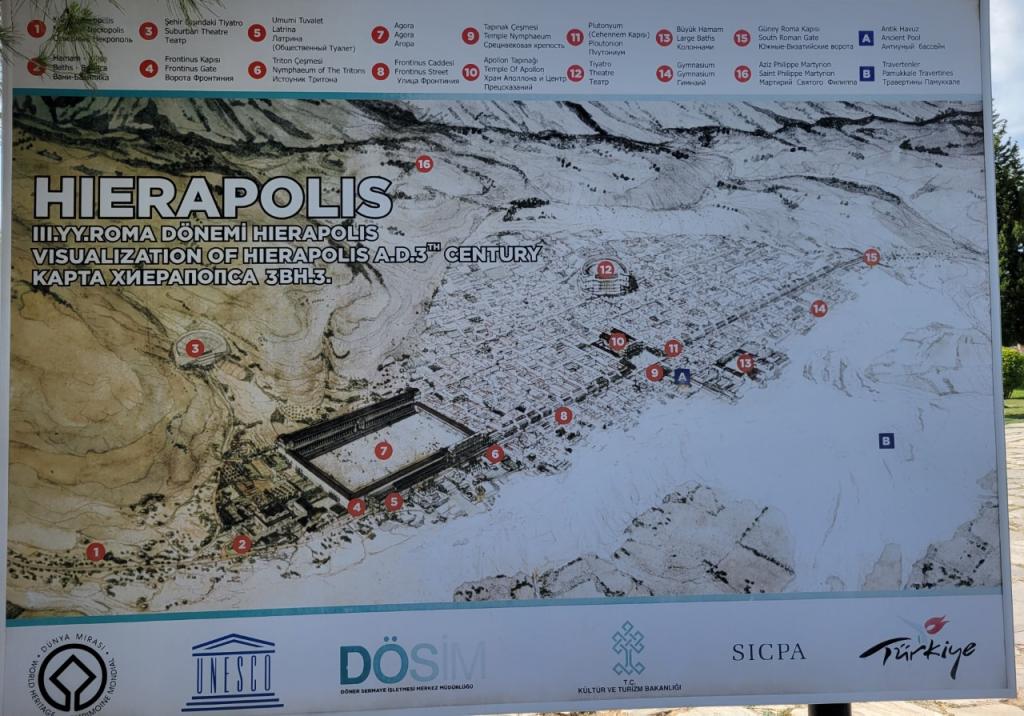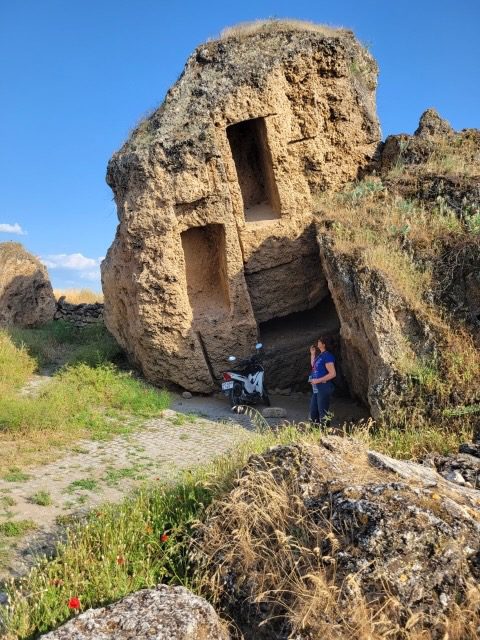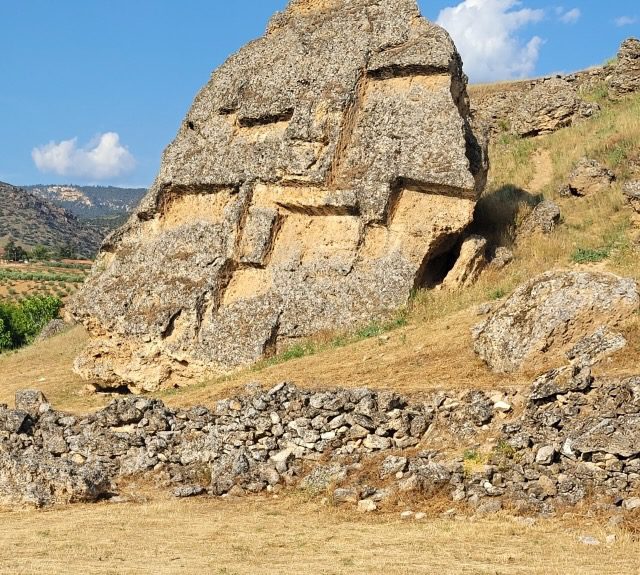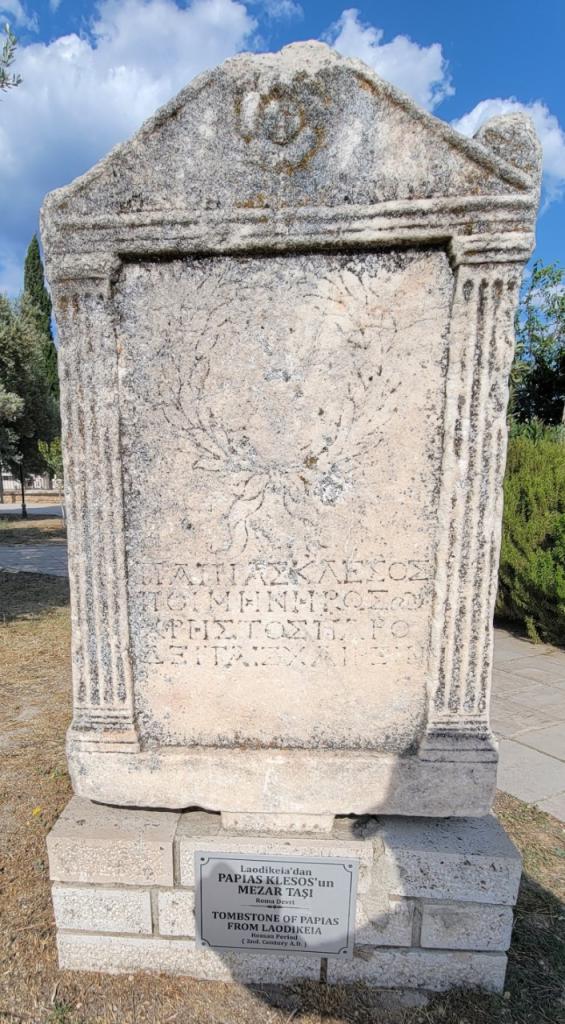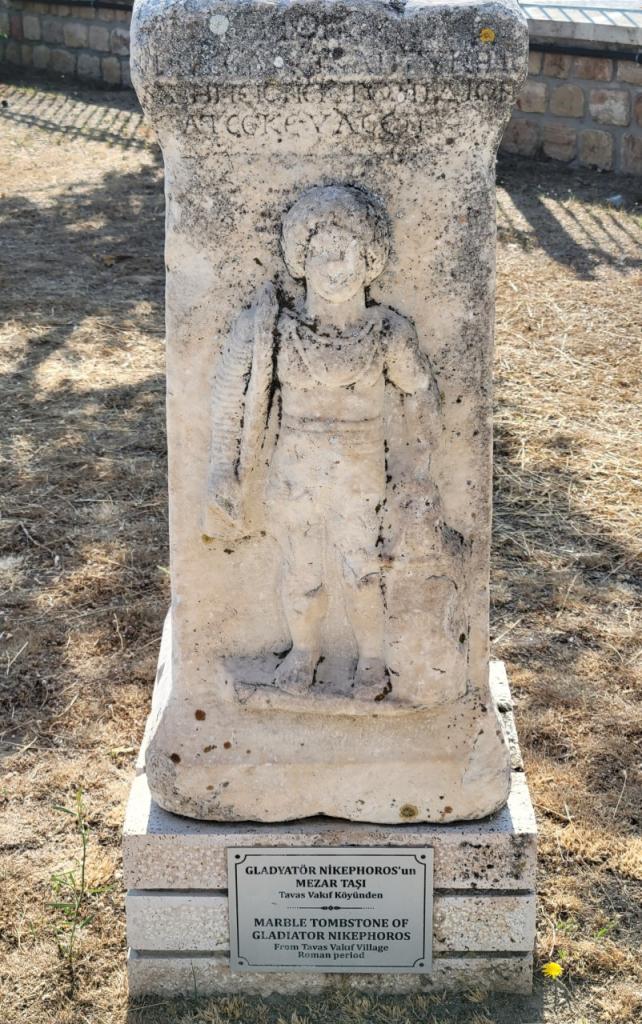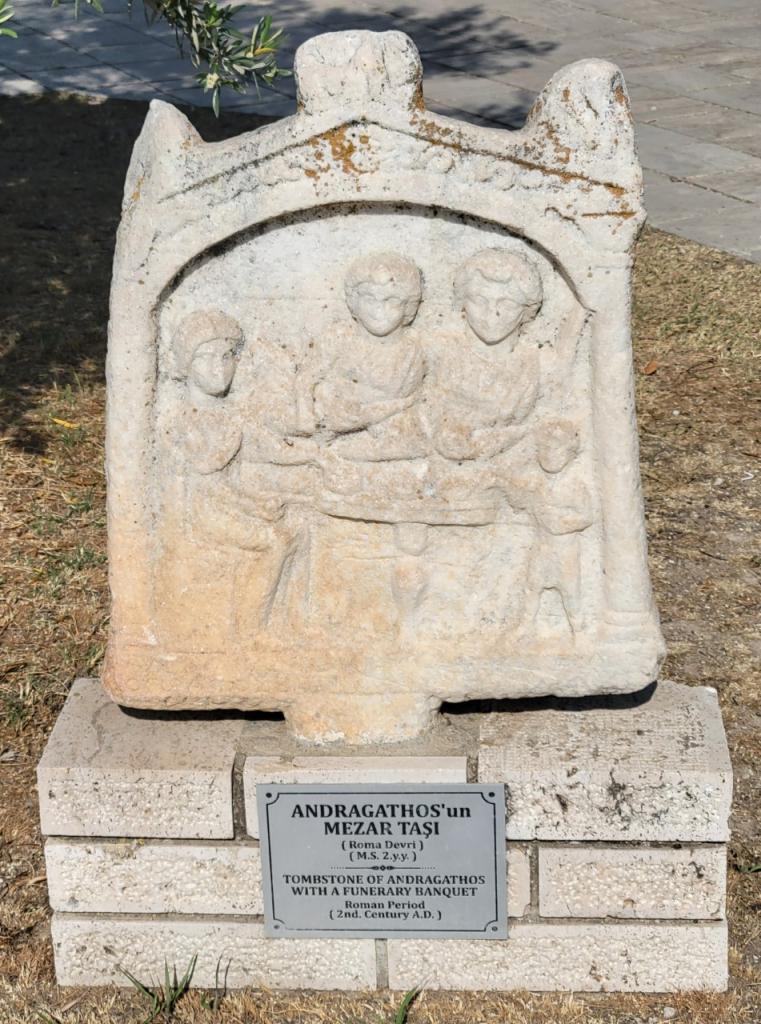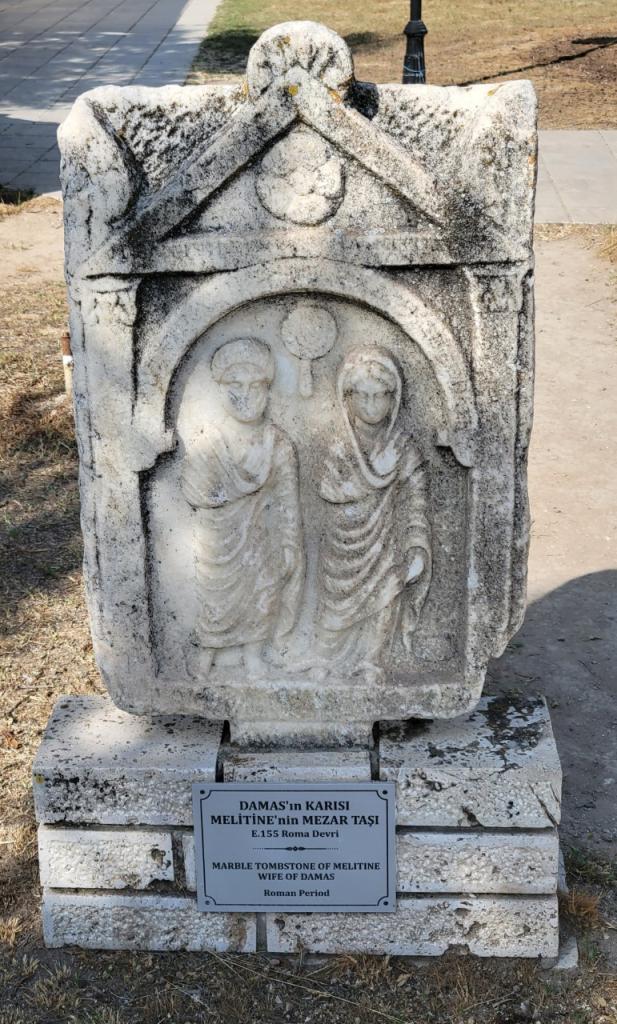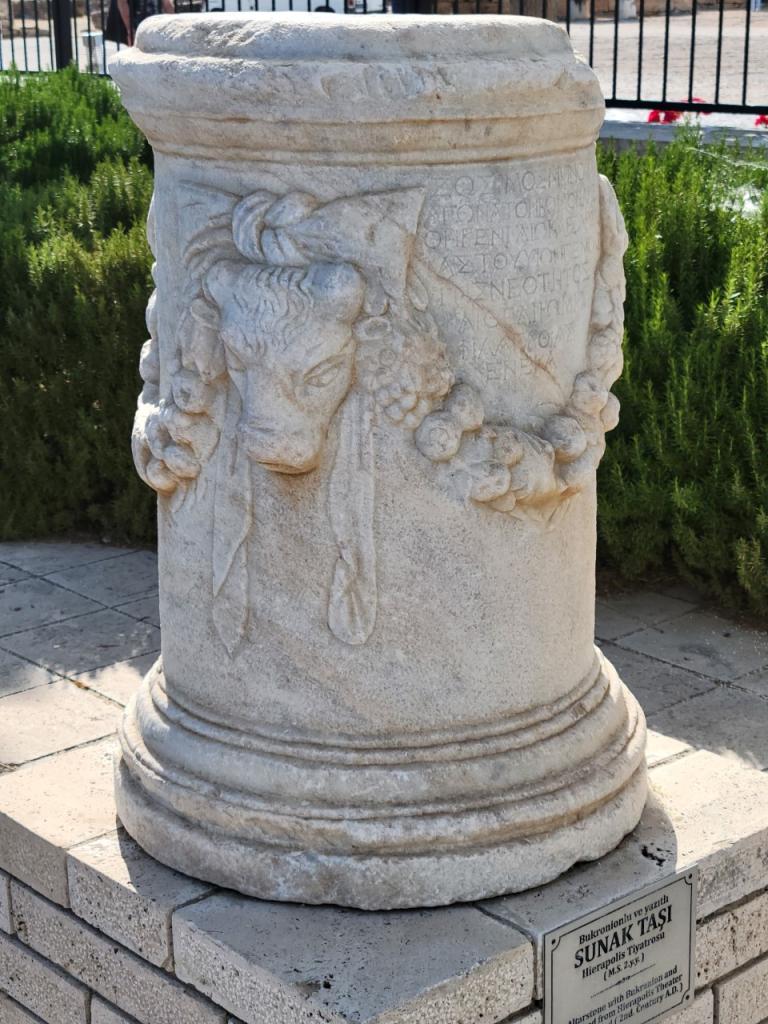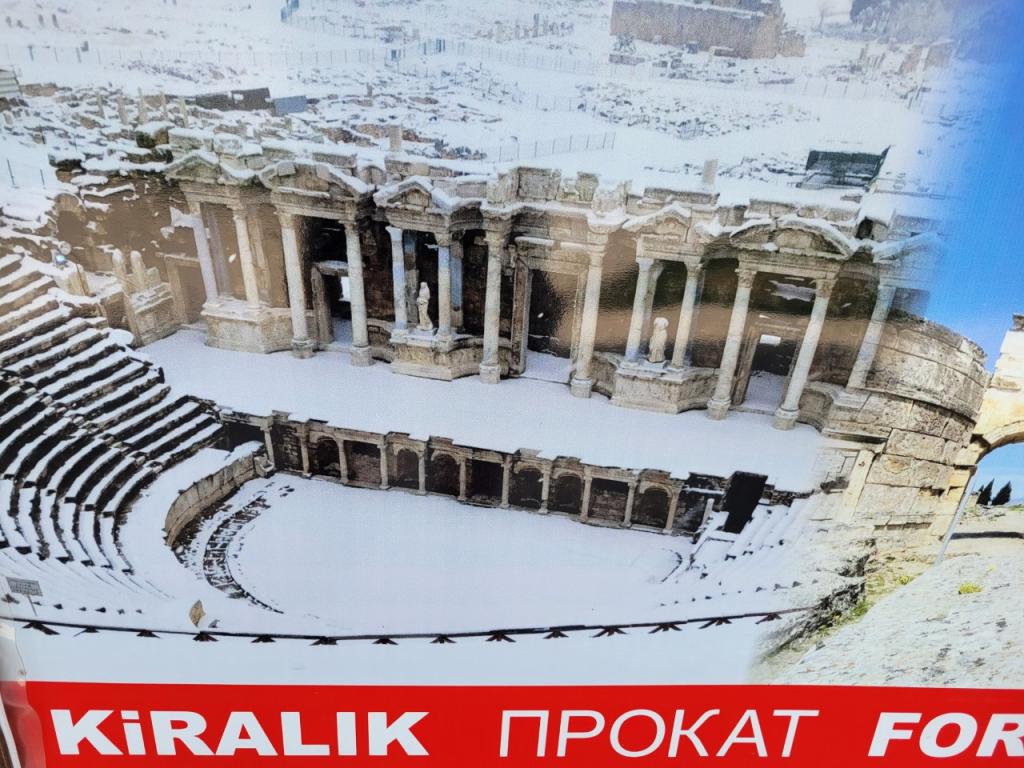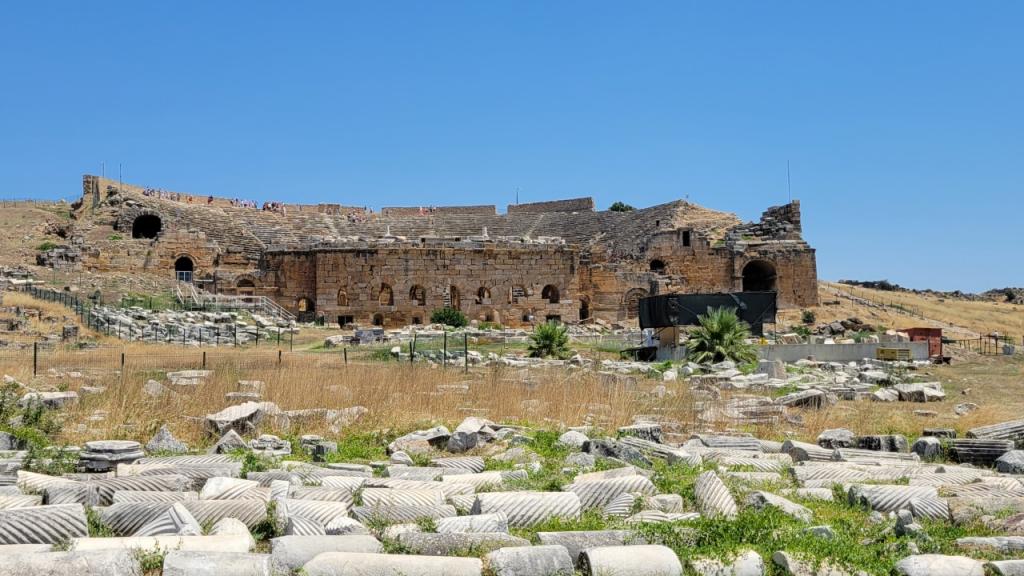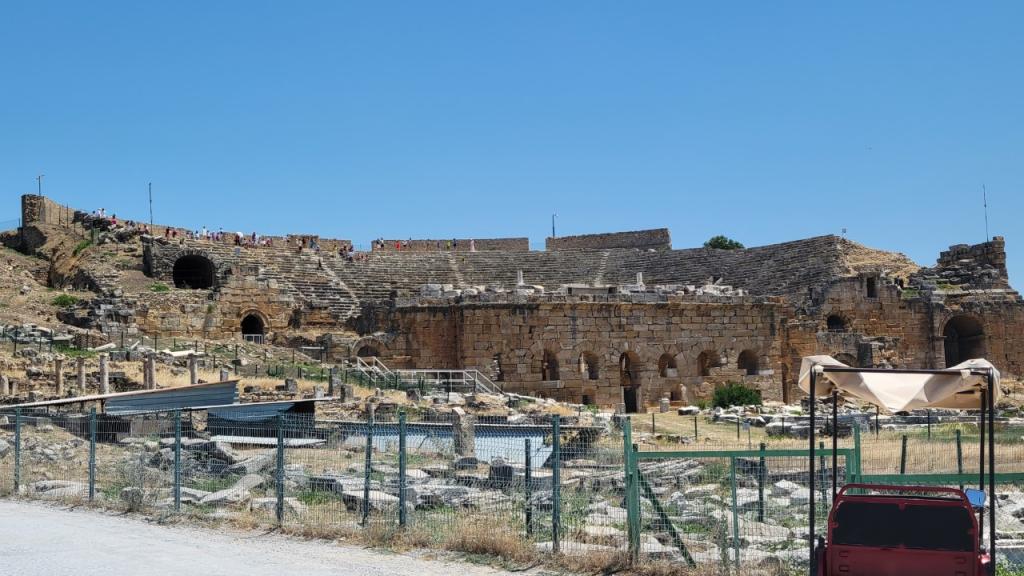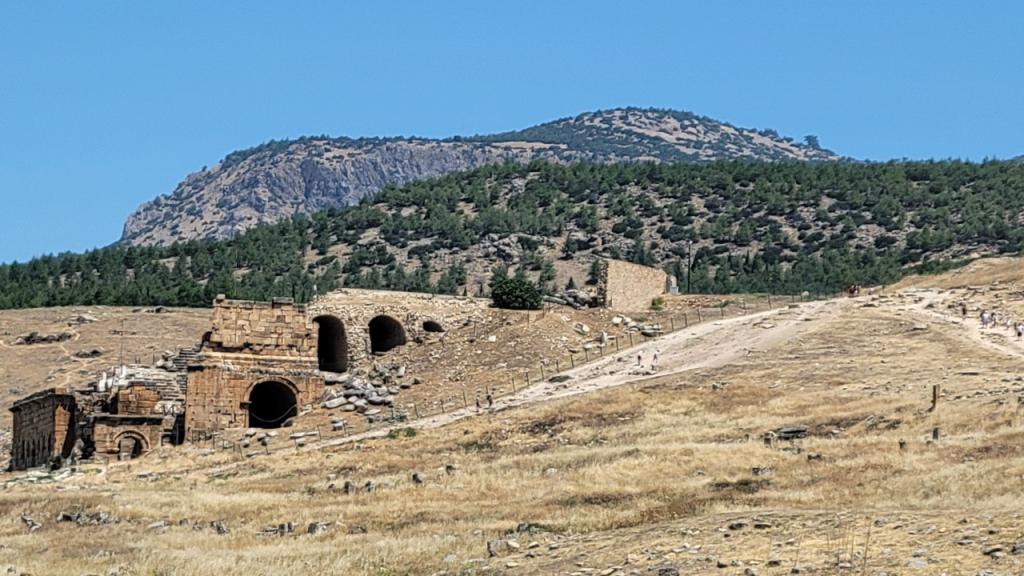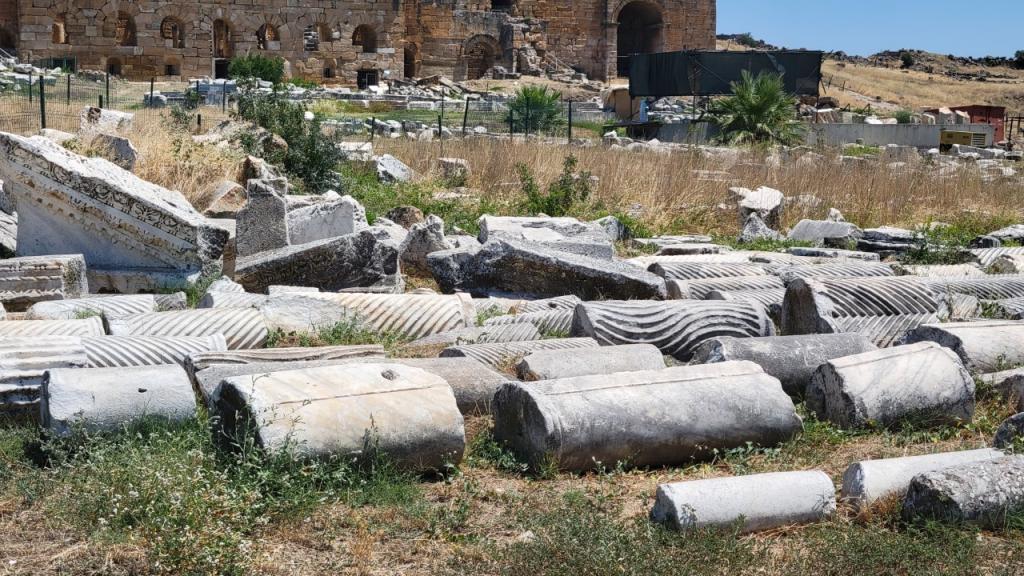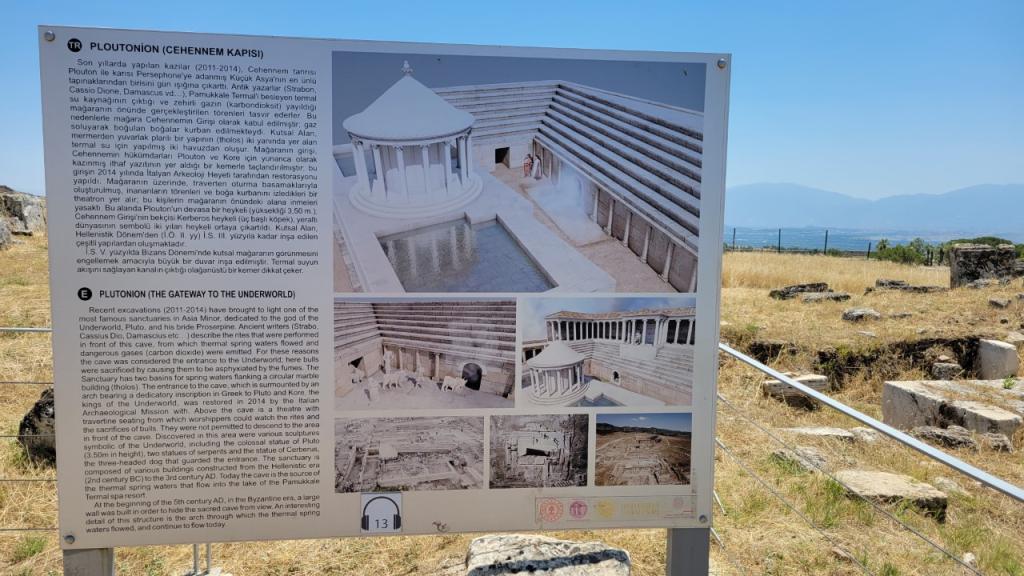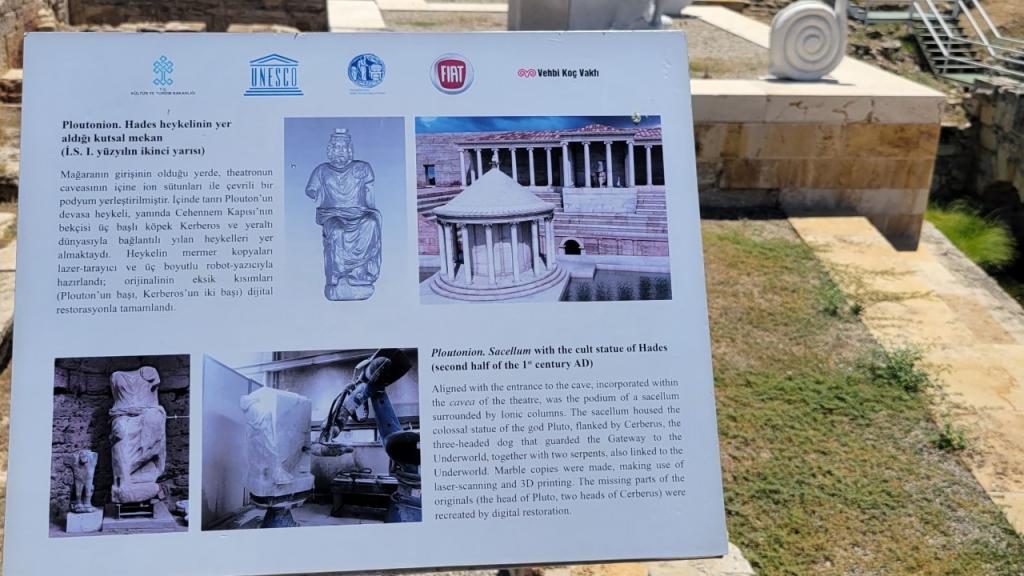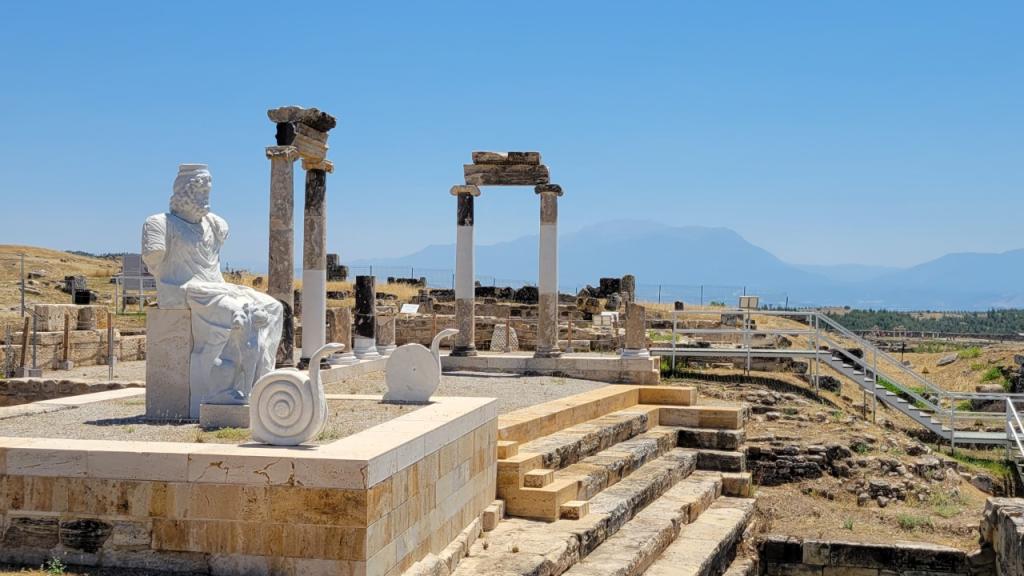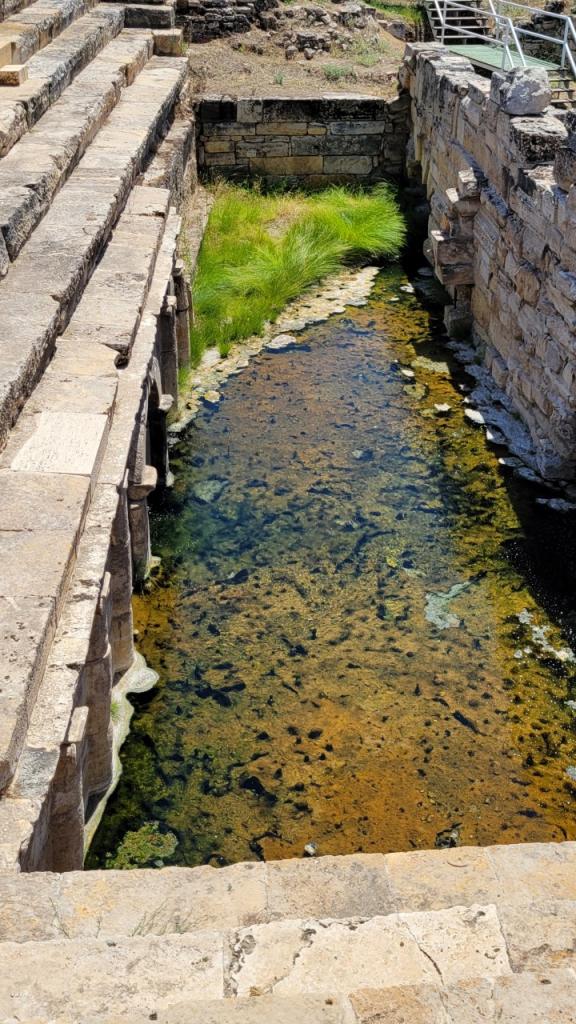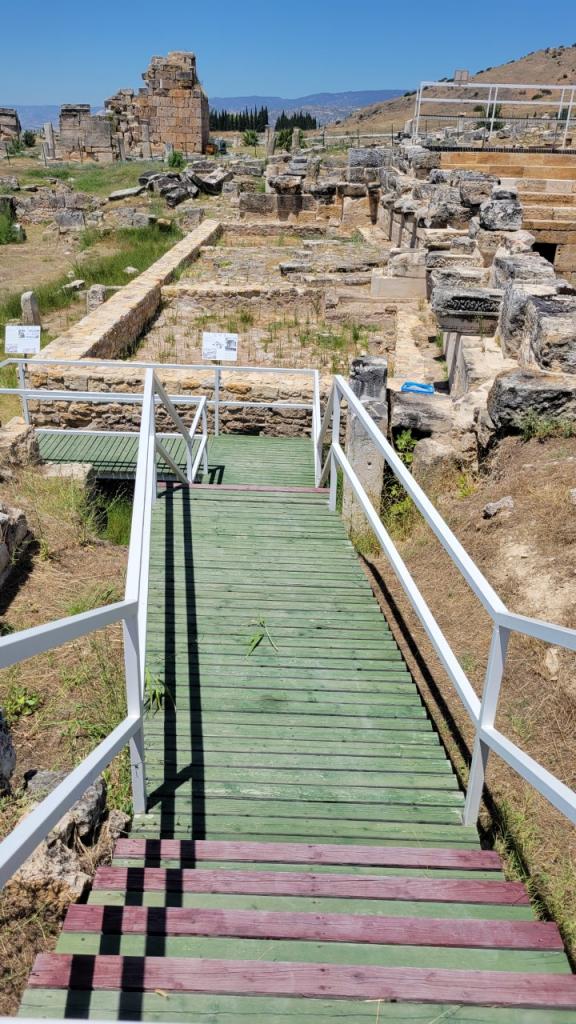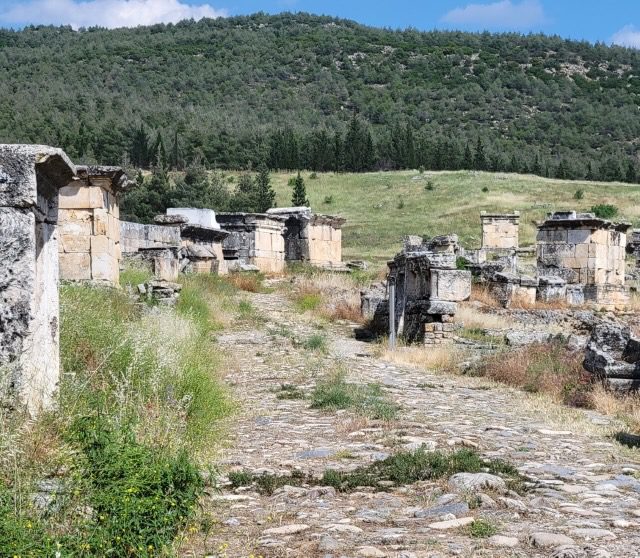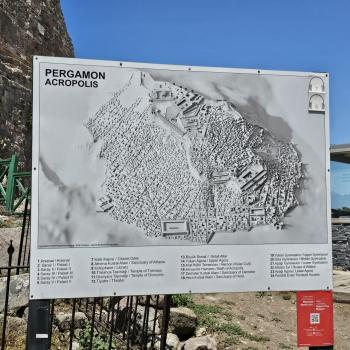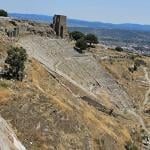Meanwhile back on the ground, let’s see the ancient city of Hierapolis, which according to tradition a Philip settled here, most likely the one who had the prophesying daughters in Acts, not the apostle, bearing in mind how all those persons got blended together in the second and later centuries.
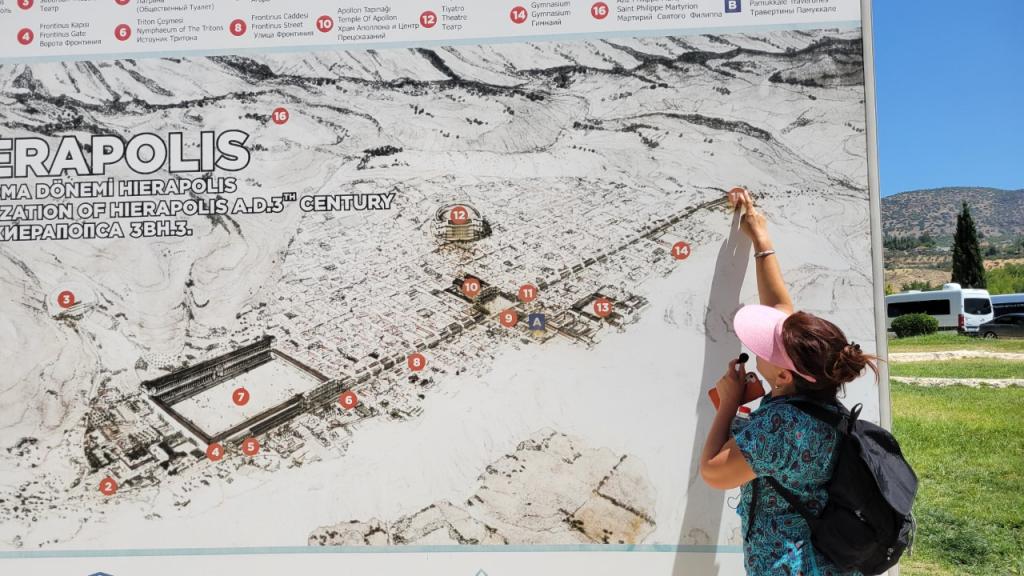 As you can see from the map this is a long linear site and at the far left end of the map is the necropolis, or the city of the dead, and on the right the city of the living including the temples, stadiums theaters, and even a church of St. Philip up on the hills. We will concentrate on the remarkable necropolis, which is one of the most elaborate and interesting ones in Turkey. There is considerable irony in this place, because even in antiquity people came here to get well by soaking themselves in the hot springs and being ministered to by the priests, and maybe even by getting a hopeful oracle at the Plutonium, the religious cave of fumes that caused the priests to prophesy. And the unwell died here by the droves. There is in addition today a small museum with numerous interesting statues and grave markers. We will start at the back end of the site on the far right and then stop at the museum.
As you can see from the map this is a long linear site and at the far left end of the map is the necropolis, or the city of the dead, and on the right the city of the living including the temples, stadiums theaters, and even a church of St. Philip up on the hills. We will concentrate on the remarkable necropolis, which is one of the most elaborate and interesting ones in Turkey. There is considerable irony in this place, because even in antiquity people came here to get well by soaking themselves in the hot springs and being ministered to by the priests, and maybe even by getting a hopeful oracle at the Plutonium, the religious cave of fumes that caused the priests to prophesy. And the unwell died here by the droves. There is in addition today a small museum with numerous interesting statues and grave markers. We will start at the back end of the site on the far right and then stop at the museum.
First we notice at the edge of town, local stone needed to be carved out for all these tombs and sarcophagi, and you can see where this happened…
Here is a very significant tombstone at the museum… which mentions a Papias from Laodicea, who is called a ‘shepherd’ and bids passersby greetings, and clear the stone announces someone of importance. It is my view this could be the famous Papias who tells us towards the end of the first century about the composition of the Gospels, as recorded in Eusebius’ church history. Ordinary shepherds do not get tombstones like this very often, and clearly Papias was an early church leader who even tells us he met with John the elder and whatever eyewitnesses he could encounter. He may well have ended up in Laodicea and Hierapolis as a church leader, in fact a bishop of Hierapolis. He lived between about 60 and 120 A.D. and is an important bridge figure between the apostolic and post-apostolic eras. See Richard Bauckham’s excellent book Jesus and the Eyewitnesses and you might also enjoy my novel Papias and the Mysterious Menorah.
Here is the tombstone of a gladiator…not as big or noticeable as that of Papias’…
Here’s tombstone that depicts a funerary banquet, on the tomb of the deceased. This was a normal practice…
This is a tombstone of a wife, depicted as usual with her husband who likely erected the stone in her memory.
This last honorific column is important, as it shows the sacrificial animal used for the biggest celebratory occasions— namely the bull. This helps us understand the story in Acts 14.8-20 where when the town thought that Paul and Barnabas were Hermes and Zeus they were prepared to sacrifice the biggest beast they had.
As we enter into the site proper, almost immediately we are in sight of the large theater… I love this winter shot of it, followed by some summer shots of it.
This is just across the road from the theater, where we find other public buildings and at the very top of that hill the church of Philip. But just below the theater we see numerous columns and a newly reconstructed and opened plutonium….
Yes that’s the old boy himself, the god of the underworld….there was a pool next to the entrance into the cave where one inhaled the fumes…
Here’s the new stairway into the entrance to the underworld…..
It’s pretty long walk from here to the nekropolis, or the city of the dead, so we need to head in that direction…


